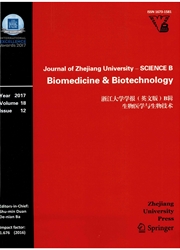

 中文摘要:
中文摘要:
卵母细胞质量长被看作了一个主要限制因素为在 vitro 授精(IVF ) 。在过去的十年,广泛的观察证明线粒体在卵母细胞细胞质起一个重要作用,因为它能为授精和 preimplantation 胚胎开发提供腺苷 triphosphate (ATP ) 并且也充当细胞内部的钙和 proapoptotic 因素的店。在卵母细胞成熟期间,线粒体被他们的分发模式的不同变化从对同类描绘异构,它与积云 apoptosis 被相关。有增加的卵母细胞优秀减少母亲的年龄。最近的研究证明了低优秀卵母细胞有一些年龄相关的机能障碍,它在 mitochondrial 膜潜力, mitochondrial 基因表示的 mitochondrial DNA (mtDNA ) 损坏的增加, chromosomal aneuploidies, apoptosis 的发生,和变化包括减少。所有这些机能障碍可以引起发展延迟的高水平和 preimplantation 胚胎的拘捕。这些 mitochondrial 变化可以从仔细与氧化精力生产或钙超载被联系的过多的反应的氧种类(ROS ) 产生,这被建议了,它可以触发渗透转变毛孔开和随后的 apoptosis。因此,线粒体能为卵母细胞质量评估被看作符号,并且卵母细胞质量能被提高线粒体的物理功能改进,是可能的。这里,我们在卵母细胞上在 mitochondrial 功能考察了最近的进展。
 英文摘要:
英文摘要:
Oocyte quality has long been considered as a main limiting factor for in vitro fertilization (IVF). In the past decade, extensive observations demonstrated that the mitochondrion plays a vital role in the oocyte cytoplasm, for it can provide adenosine triphosphate (ATP) for fertilization and preimplantation embryo development and also act as stores of intracellular calcium and proapoptotic factors. During the oocyte maturation, mitochondria are characterized by distinct changes of their distribution pattern from being homogeneous to heterogeneous, which is correlated with the cumulus apoptosis. Oocyte quality decreases with the increasing maternal age. Recent studies have shown that low quality oocytes have some age-related dysfunctions, which include the decrease in mitochondrial membrane potential, increase of mitochondrial DNA (mtDNA) damages, chromosomal aneuploidies, the incidence of apoptosis, and changes in mitochoncLrial gene expression. All these dysfunctions may cause a high level of de- velopmental retardation and arrest of preimplantation embryos. It has been suggested that these mitochondrial changes may arise from excessive reactive oxygen species (ROS) that is closely associated with the oxidative energy production or calcium overload, which may trigger permeability transition pore opening and subsequent apoptosis. Therefore, mitochondria can be seen as signs for oocyte quality evaluation, and it is possible that the oocyte quality can be improved by enhancing the physical function of mitochondria. Here we reviewed recent advances in mitochondrial functions on oocytes.
 同期刊论文项目
同期刊论文项目
 同项目期刊论文
同项目期刊论文
 Effects of In Vitro Maturation on Histone Acetylation in Metaphase II Oocytes and Early Cleavage Emb
Effects of In Vitro Maturation on Histone Acetylation in Metaphase II Oocytes and Early Cleavage Emb 期刊信息
期刊信息
